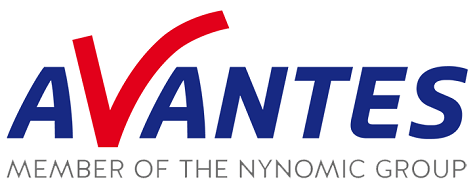A coating’s optical thickness is determined by white light interference and mathematical calculations are used to translate the pattern into optical thickness.
In thin film metrology, these mathematical calculations are used to determine the thickness and presence of the coatings that have been deposited on a substrate material using a variety of processes.
There are a number of techniques for this measurement range, including ellipsometry, profilometry, spectroscopic reflectometry and x-ray analysis. Fiber-optic sampling tools and Avantes instruments enable spectroscopic reflectometry measurements to support applications in a range of industries from solar to semiconductor and optical coating measurements. Low cost measurement systems for multi-and single-layer thin films on a number of substrates are provided by Avantes thin film solutions.
Thin Film Quality Control
Thin film deposition processes require regular monitoring and quality control particularly as new recipes are implemented and optimized in a coating facility.
Typical applications require regular quality control inspection during the initial phases requiring a high-speed offline measurement system to validate film thickness.
Avantes thin film solutions enable high-speed spot measurements which can facilitate thin film presence and thickness validation.
Thin Film Reflectometry
In spectroscopic reflectometry, samples are illuminated with a white light, especially deuterium halogen and tungsten halogen at an incident angle normal to the sample and then measuring the reflectance and interference from the same geometry.
Based on the nature of the visible, ultraviolet or infrared coating, wavelength measurements may be required to obtain the right fitting of the measured curve relative to the theoretical reflectance curve.
A database of optical constants n and k are used to develop the theoretical curve. The refractive index is the n value and the extinction coefficient is the k value. First the sampling process involves measurement of a reference uncoated substrate followed by the sample measurement using the same conditions.
Substrate characteristics such as thickness and material are software inputs along with thin film layer characteristics.
Software algorithms are used to capture and analyze software algorithms that compare the measured data to theoretical calculated values derived from the database of optical constants.
The software offers a calculated thickness value along with a measure of goodness of fit relative to the theoretical curve.
Single-Layer Thin Film Metrology
The single-layer thin film metrology system from Avantes includes its AvaSpec -ULS2048-USB2 fiber-optic spectrometer, AvaLight-DHc/AvaLight-DH-S deuterium-halogen light source or AvaLight-HAL tungsten halogen light source, the FCR-7UV200-2-ME (optional FCR-7UV400-2-ME for higher throughput) fiber-optic reflection probe and the Thin Film Stage.
The Avantes’ AvaSoft Thinfilm software drives the single layer system and is a 32 or 64-bit application which supports single layer measurements of thin films ranging from 10nm-50µm with 1nm resolution.
UV/VIS and NIS wavelength measurements are supported by AvaSoft-ThinFilm from 200-1100nm. The system has an optional thin film standard which provides coated and uncoated sample substrates for validation purposes. The AvaLight DHc compact deuterium halogen source us adequate for most specular surface UV measurements but for more diffuse coated surfaces, the higher power AvaLight-DH-S is recommended.
Multi-Layer Thin Film Metrology
Avantes’ multi-layer thin film metrology system includes the company’s AvaSpec-ULS2048-USB2 fiber-optic spectrometer, AvaLight-DHc/AvaLight-DH-S deuterium halogen light source or AvaLight-HAL tungsten halogen light source, the FCR-7UV200-2-ME (optional FCR-7UV400-2-ME for higher throughput) fiber-optic reflection probe and its thin film stage. The TFProbe 2.0 is the software that drives the multi-layer system and has been developed by Angstrom Sun Technologies and is fully compatible with Avantes spectrometers.
Up to five layer measurements are supported by this application and several methods are supported including dispersion, nk constants and effective media approximation (EMA). TFProbe offers a user-friendly graphical user interface to input layer structure parameters.
An optional thin-film standard may be included in the system that offers sample coated and uncoated substrates for validation purposes. TFProbe supports UV/VIS and NIR wavelengths from 200-1700 nm and enables the connection of multiple spectrometers to support this broadband wavelength measurement capability.
The AvaLight-DHc compact deuterium halogen source is adequate for most specular surface UV measurements but for more diffuse coated surfaces, the higher power AvaLight-DH-S is recommended.

This information has been sourced, reviewed and adapted from materials provided by Avantes BV.
For more information on this source, please visit Avantes BV.